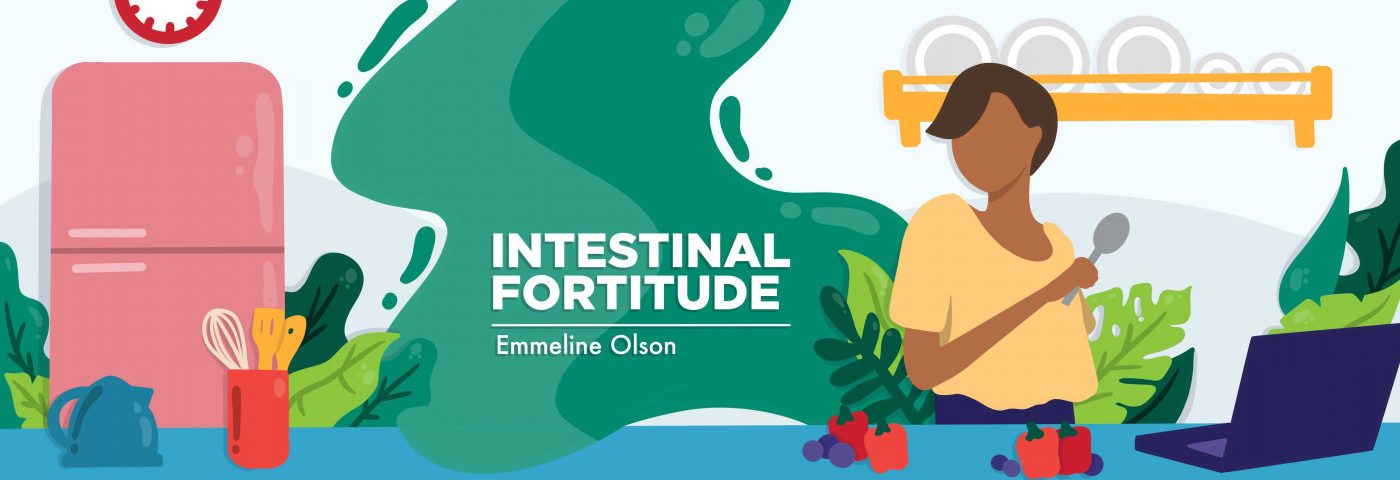Having ended the saga with my liver (knock on wood), my gastroenterologist can focus on my faulty colon. Thanks to Remicade (infliximab), I had been in remission from Crohn’s since around 2010. My gastroenterologist began questioning Remicade’s effectiveness a couple of years ago when my annual colonoscopy showed slight inflammation. His concern grew after the severe flare I had in March. My colonoscopy in August confirmed that my Crohn’s is active again.
I’m three-fourths of the way through a new treatment plan to determine if I’ll continue receiving Remicade. The process involves increasing my infusions from every eight weeks to every four weeks for four months. I began my new schedule on Sept. 3. The third of four infusions is today.
To gauge the treatment’s success, my doctor ordered two tests. The first was to do number two — providing a stool sample for a fecal calprotectin test. Calprotectin is a protein released by neutrophils. A neutrophil is the most common type of white blood cell that fights against infection in the body. High amounts of calprotectin in feces indicate inflammation in the gastrointestinal tract.
Instead of performing a colonoscopy, a doctor may order the test to measure inflammatory bowel disease (IBD) activity noninvasively. The test also distinguishes between IBD and irritable bowel syndrome.
My gastroenterologist ordered the fecal calprotectin test to have a quantifiable level of my inflammation. That way, he would have a baseline if he orders the test again after four months.
Figuring out the test kit
I picked up the fecal calprotectin kit when I went for my monthly bloodwork at the end of August. While one tech collected my blood, I watched another pack various containers in an inconspicuous brown paper bag.
She told me to write my name, date, and time on the collection label and said I wouldn’t need to refrigerate the sample. She also instructed me to include my lab order, which she placed in the bag.
As soon as I got home, I opened the bag. Inside was a specimen collection hat. I had used one before, so I knew to place it between the toilet bowl and the seat and do my business. But then what?
I pulled out two small plastic containers with screw tops. The small one was about the size of a pill container. The larger one with a yellow cap looked like a urine sample cup. I was confused. Was I supposed to fill both containers? Was the larger container for watery stool and the smaller for a solid or formed specimen?
The only item left in the sack was a zip-top plastic bag. Inside was a small cloth and a folded piece of paper. I pulled out the sheet hoping it would be instructions, but it was only my lab order. The plastic bag had directions, but they only stated to place the sealed containers in the bag along with the cloth to soak up spillage.
I’ve done a lot of tests over 24 years living with two autoimmune diseases. Amazingly, collecting my poop was never one of them. I found vague instructions online. I decided to follow my gut, no pun intended, and use common sense. If I did it wrong, the worst that could happen would be redoing the test.
Taking the test
The morning I decided to take my sample to the lab, I prepped the containers. With a Sharpie, I wrote my name on the label of the small container. As I turned it around to write the date and time, I noticed four drawings with checkboxes.
One was shaped like a puddle. Another looked like a faceless poop emoji. The third resembled a pile of rocks. The last one reminded me of an Almond Joy candy bar. The heading above said, “Sample Form.” The entire time I was looking for information on which container to use, the directions were on the label!
As I opened the jar to insert my sample, I was delighted to find a tiny spoon connected to the lid. I easily, yet carefully, scooped the specimen into the container up to the fill line. After I marked the appropriate shape on the label, I packed the jar with the cloth and my lab order in the plastic bag and dropped it off.
The results and last step
When the nurse called with the results, she said my fecal calprotectin was high, but she didn’t tell me my number. Normal levels are 50.0 micrograms per gram or less. Levels that are 120.1 micrograms or higher indicate active inflammation.
The last step of my treatment protocol, which I’ll take before my infusion in November, will test if I’ve developed Remicade antibodies. If I test positive for antibodies and my fecal calprotectin doesn’t decrease, the new year may bring a new Crohn’s medication.
***
Note: IBD News Today is strictly a news and information website about the disease. It does not provide medical advice, diagnosis, or treatment. This content is not intended to be a substitute for professional medical advice, diagnosis, or treatment. Always seek the advice of your physician or other qualified health providers with any questions you may have regarding a medical condition. Never disregard professional medical advice or delay in seeking it because of something you have read on this website. The opinions expressed in this column are not those of IBD News Today, or its parent company, BioNews, and are intended to spark discussion about issues pertaining to IBD.

